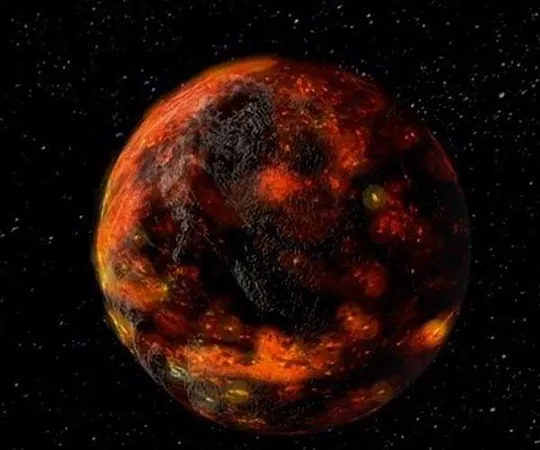
Groundbreaking Discovery: Lunar Magnetic Anomalies Linked to Ancient Magma Intrusions!
2024-10-03
Author: Arjun
Groundbreaking Discovery: Lunar Magnetic Anomalies Linked to Ancient Magma Intrusions!
In a remarkable scientific breakthrough, researchers from China University of Geosciences, led by Professor Shuo Yao and her doctoral student Hongyi Wang, have uncovered that magnetized magma intrusions are the origin of two significant lunar magnetic anomalies. This groundbreaking discovery highlights the complexities of lunar geology and sheds new light on the Moon's magnetic history.
Utilizing a cutting-edge 3D amplitude inversion technique initially developed at the University of British Columbia's Geophysical Inversion Facility, the team meticulously validated its applicability to lunar studies. Given the intricate nature of magnetic directions on the Moon, coupled with the uncertainty surrounding Curie depths, this advanced technique proved indispensable. By postulating a spherical magnetized body and implementing a depth weighting function, they effectively reconstructed the 3D distribution of magnetization, revealing essential data about the lunar crust's magnetized layers.
Their investigation focused on two distinct magnetic anomalies: a weak anomaly located in the tranquil Mare Tranquillitatis and the striking Reiner Gamma anomaly in Oceanus Procellarum. By examining data from the Lunar Prospector and Kaguya spacecraft, researchers determined that the surface ages of these anomalies date back approximately 3.6 and 3.3 billion years, a crucial period just before the decline of the Moon's ancient magnetic field.
Remarkably, the study found that the depth to the base of the magnetic carriers is around 50 kilometers beneath Mare Tranquillitatis and approximately 30 kilometers under Reiner Gamma. This suggests that these anomalies arise from ancient magnetized magma intrusions rather than previously thought impact melt layers. Notably, the maximum magnetization observed beneath Reiner Gamma was an impressive 3.0 A/m. This finding implies that the magnetized material there could predate the surface materials, allowing scientists to deduce that the intensity of the lunar magnetic field was likely several microteslas around 3.3 billion years ago.
This research not only enhances our understanding of the Moon's geological history but also provides compelling evidence that ancient magma intrusions significantly impacted the formation of lunar magnetic anomalies. As scientists continue to explore the mysteries of our celestial neighbor, this discovery opens new avenues for research into the Moon's evolution and its magnetic landscape.
Stay tuned for more updates on lunar exploration, as scientists dive deeper into uncovering the secrets of the Moon's past!


 Brasil (PT)
Brasil (PT)
 Canada (EN)
Canada (EN)
 Chile (ES)
Chile (ES)
 España (ES)
España (ES)
 France (FR)
France (FR)
 Hong Kong (EN)
Hong Kong (EN)
 Italia (IT)
Italia (IT)
 日本 (JA)
日本 (JA)
 Magyarország (HU)
Magyarország (HU)
 Norge (NO)
Norge (NO)
 Polska (PL)
Polska (PL)
 Schweiz (DE)
Schweiz (DE)
 Singapore (EN)
Singapore (EN)
 Sverige (SV)
Sverige (SV)
 Suomi (FI)
Suomi (FI)
 Türkiye (TR)
Türkiye (TR)